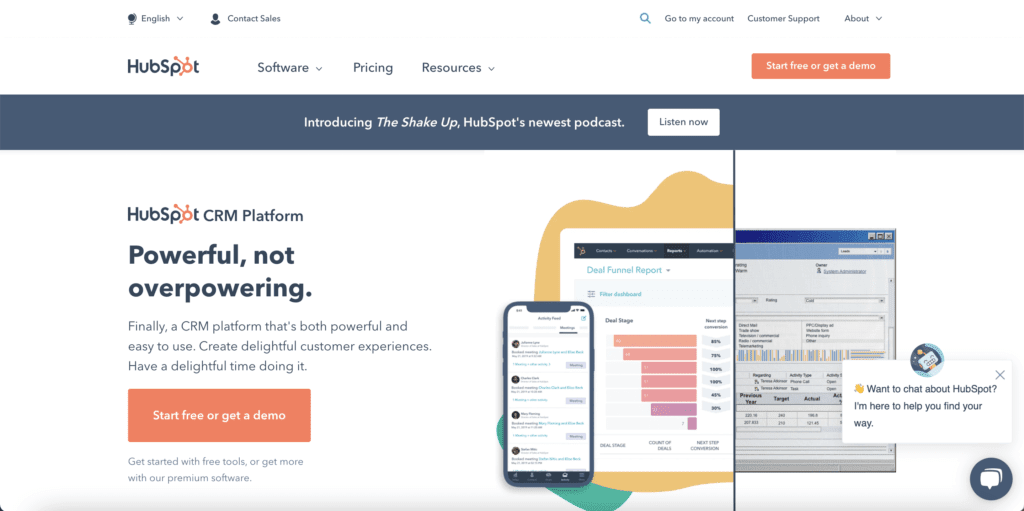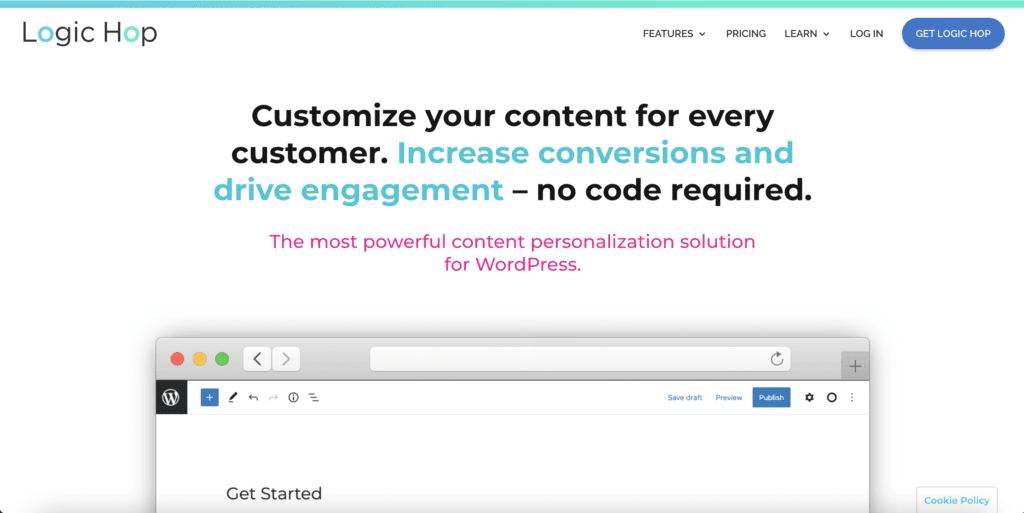Tips and tools for B2B marketers getting started with website personalisation

Website personalisation is one of those things that’s often somewhere on the to do list for B2B marketers – we know from speaking to our clients in the B2B tech, software & SaaS space. But it’s also one of those things that many marketers don’t get around to. From picking the right tools to implementing the approach and measuring the ROI, it can be hard to find the time among the myriad of other responsibilities B2B marketers have to balance.
But whether it’s personalising call to actions or adapting site content based on industry sectors, website personalisation can play a powerful role in engaging key accounts and optimising conversion and lead generation of your website. Not to mention that for any B2B marketers working on Account Based Marketing, website personalisation can also help with ABM orchestration, ensuring that the right people see the right content at the right time by delivering personalised digital experiences.
How can B2B marketers implement website personalisation?
Tip: Keep it simple
In a similar way to how segmenting and personalising your CRM can quickly get complicated, website personalisation can also spiral out of control if you try to do too much too soon. So start small and simple. If you build out too much logic, it not only becomes much harder to manage but also much harder to measure and report on.
Tip: Measurement baseline
Making sure your analytics and measurement are in a good state should be a prerequisite to implementing any web based personalisation. If you can’t measure the baseline of how the website is currently performing in terms of traffic, engagement, conversion rates etc, then you will likely struggle to know how effective your personalisation efforts really are. And without being able to measure effectiveness, your website personalisation work might be short lived if you’re not able to demonstrate ROI to the rest of your business.
Tip: Start with the customer journey & personas
A deep understanding of customer journeys and user personas is fundamental to ensuring your approach to website personalisation makes sense and performs. In fact, understanding your buyer personas and customer journeys is fundamental to all marketing, not just website personalisation, so hopefully you’ve already got personas and customer journeys mapped out! If not, tools like UXPressia might be useful and this guide from B2B International can help you through the process. By going through this process, you’ll be able to think about how it might be relevant to personalise your website for different personas at different stages of the buyer journey based on behaviour, ensuring that your approach to website personalisation aligns with your wider marketing strategy.
Tip: Choose your data
Broadly, there are a couple of categories of data on which you can segment and begin to personalise website visits.
Behavioural personalisation: this is personalisation based on behaviour, specifically how a user has interacted with your website in the past. For example this could include how many times they have visited your website, which case studies they have consumed or from which source they have arrived on your site.
Profiled personalisation: this refers to making use of data such as industry sector or company size to personalise your website. Firmographic databases that utilise IP addresses to identify who is visiting your website can be used to adjust content or messaging on the fly. This is particularly interesting for B2B marketers with products or solutions relevant to various industries, and who want to personalise their website experience to relevant personas within key markets.
As mentioned above, keeping things simple is the best way to get started with website personalisation, so it’s worth thinking about which profile based or behaviour based data you want to make use of. In turn, this will help you decide which tools and technology you need to be able to actually implement personalisation.
What website personalisation tools are available for B2B marketers?
Once you’ve defined your website personalisation strategy, it’s time to look at the tools and technology that will allow you to get started with personalisation. There are a lot of MarTech solutions out there, but below are a few different types of website personalisation solution that we think are worth exploring:

Tool: Webeo
Webeo is a powerful personalisation solution that integrates with any website or CMS. Webeo uses the largest matched IP database in the world to know who is visiting your site, and enables you to personalise the site based on the data.
Integrations even exist with other tools you might well be using like HubSpot, Salesforce, Pardot and Marketo, meaning you can create personalised one to one experiences for individual contacts. This could be particularly powerful if you’re exploring using website personalisation as part of your ABM strategy.
Webeo is a standalone tool that sits outside of your website CMS, so think of it as a layer of powerful personalisation that sits on top of your website. This means getting started is straightforward and you don’t need to worry about custom web development to integrate Webeo with your website CMS.

Tool: HubSpot
HubSpot needs no introduction and of course isn’t just a personalisation tool, but if you happen to be using it for your marketing automation or website CMS already it can certainly help you get started with elements of website personalisation.
HubSpot has features such as personalised ‘Smart’ call to actions which allow you to create call to action buttons that can change based on profile based data of users – for example what device they are using, where they are based or even which lifecycle stage they are at within your CRM.
You can also implement targeting options in pop-up forms and slide-ins, allowing you to show personalised messages, call to actions or lead gen forms only if specific conditions are met, such as if the user has visited a certain page, is in a certain country or has been referred from a certain URL.
These are just a couple of fairly basic but also easy to implement forms of personalisation for any B2B marketing team that happens to already be using HubSpot. We use HubSpot ourselves to drive all of our marketing and sales as an agency, as well as being a HubSpot certified agency. It’s a powerful solution that we’re big fans of.

Tool: LogicHop
At 93digital we’re famous for delivering digital experiences built on WordPress for some of the fastest growing B2B tech, software & SaaS companies in the world. And so it would be wrong for me to wrap up this post without looking at a WordPress specific website personalisation solution!
LogicHop is just that – a WordPress plugin built to bring powerful personalisation to WordPress itself. Unlike Webeo that sits outside of your website CMS, LogicHop is a WordPress plugin that you actually install inside WordPress, and you manage all of the options from within your WordPress Dashboard.
The LogicHop website has a great guide showing how it works, as well as the various profile data it can use to build personalisations, whilst also supporting integrations with other platforms such as HubSpot.
Check out this podcast on personalisation for B2B tech marketers:
Talking personalisation with Hannah Stewart, VP Global Marketing at Yieldify

ABM vs Inbound Marketing: which is right for your B2B Tech company?

How great B2B websites can shorten sales cycles
Let's Talk
Do you have a web design and build project coming up that you would like to talk about?